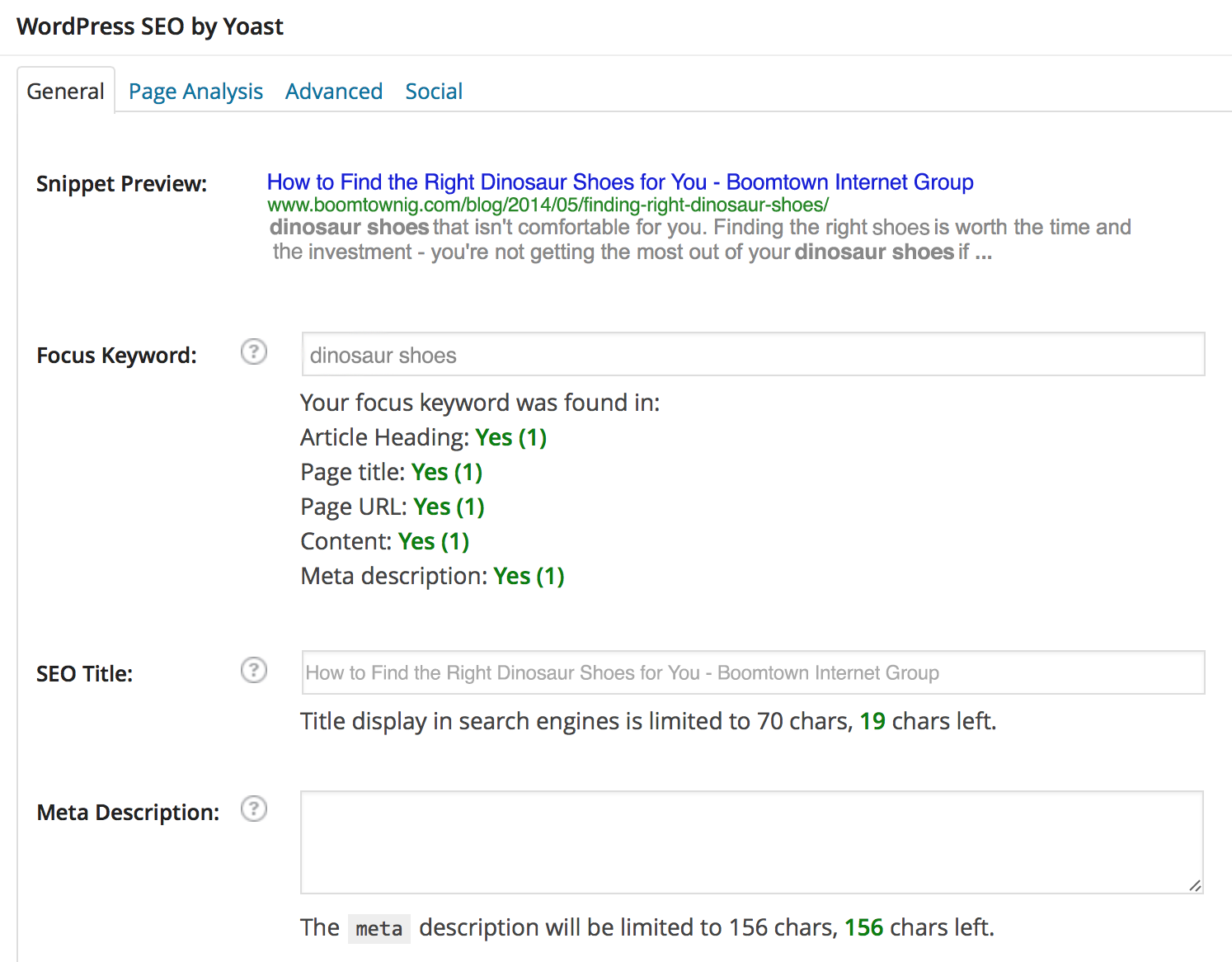The SEO Marketing game is changing every day, and most of that has to do with whatever Google’s bots were doing last night while we were asleep. It’s a given fact to anyone who works in the field – much of your time will be spent trying to figure out what changes Google has made this week which have resulted in your clients either sliding down the rankings or popping up like a champagne cork.
It’s hard, therefore, to create SEO tools that work well all the time, because tools that are effective at helping web pages to do well in the rankings this week might actually be causing web pages to do worse next week. With these things in mind, we’ve been reviewing a tool that is very popular for SEO optimization, and trying to determine whether it is still worth relying on: the Yoast plugin.
Google used to rank pages with a strong focus on keyword density. So the more times you could fit your keyword in the article, the better you’d be ranked (and you’d be smart to try to squeeze the keyword into the title, the header, the URL, and the meta description as well). So for example, if I wanted my page to rank on the first page of Google when someone typed in “dinosaur shoes,” I’d try to insert the phrase “dinosaur shoes” on my webpage everywhere it even vaguely made sense to do so. This is where Yoast comes in.
Yoast gives your page a score based on where and how frequently your keyword appears. It has to appear in the heading, title, URL, content, and meta description at least once each in order for Yoast to give your page a “green” score.
The problem with this as of lately is that Google is slowly shying away from using keyword density to rank pages. It’s still a factor, but it seems that during the course of the past few months, more keywords does not mean a better ranking. This is because Google is getting closer and closer to being able to use software to recognize colloquial language – not just a string of words, but a comprehensive piece of writing with a specific meaning and purpose. So that means a sentence like “Dinosaur shoes are great for people who like dinosaur shoes because they are dinosaur shoes,” doesn’t rank well. Even though it contains my keyword three times, it doesn’t make much sense and isn’t the way language is normally used. Google can see, now, that this is abnormal, and that I’m just trying to insert my keyword everywhere I can to get a better ranking rather than create knowledgeable, compelling content.
Yoast has a few other ideas about keywords that contradict the direction Google seems to be going with its page-ranking. Here’s another example from the plugin:
Yoast is telling me I need to fix this page by giving me yellow and orange scores (which are okay, but not great). Its first point is that my keyword density is too low (I have only used it twice within the body paragraph text). This may, admittedly, be too low for a page with a lot of content, but the page in question here is only about three paragraphs long, which means two instances of the keyword should be a reasonable ratio from Google’s new perspective.
Yoast’s second point says that I have my keyword in my page title, but that I don’t have a subheading or intro underneath the title that repeats the keyword. Again, this used to be recommended practice in terms of Google rankings, but now things are changing. With one of our clients, for example, we removed a lot of the keywords from the subheadings on his pages last month. We’ve found that his Google page rankings have come up quite a bit since then (from the mid-70’s on Google to the mid-20’s for his keywords).
Yoast is also a little annoyed that my page doesn’t have any h2 tags. Google’s rankings on h2 tags have changed recently too. First of all, we have found that having an h2 tag right underneath an h1 tag hurts rankings. Similar to the point above about repeating the keyword in a subheading, it’s just not necessary as Google begins to recognize language more naturally. On the other hand, an h2 tag halfway down a long page with a lot of content is a still good move (not even necessarily from a ranking perspective, but from a writing perspective. Breaking up long content and allowing readers to refocus is important). But again, my page only has 3 paragraphs, and an h2 tag in this case would probably feel a little unnecessary and intrusive.
To be fair, Yoast doesn’t just analyze keyword density. It can track a number of other things like outbound links, page indexing, and the like. Our concern for our clients, though, is that when they post blogs, Yoast is convincing them to up their keyword density to improve their SEO and get the “green” score (when in fact, upping the keyword density may hurt their SEO).
This is a discussion that is surely only just beginning, and will continue to evolve with Google’s changes during the course of this year. But we will certainly be keeping an eye on Yoast to see if its practices are still relevant in the ever-changing Google internet age.



